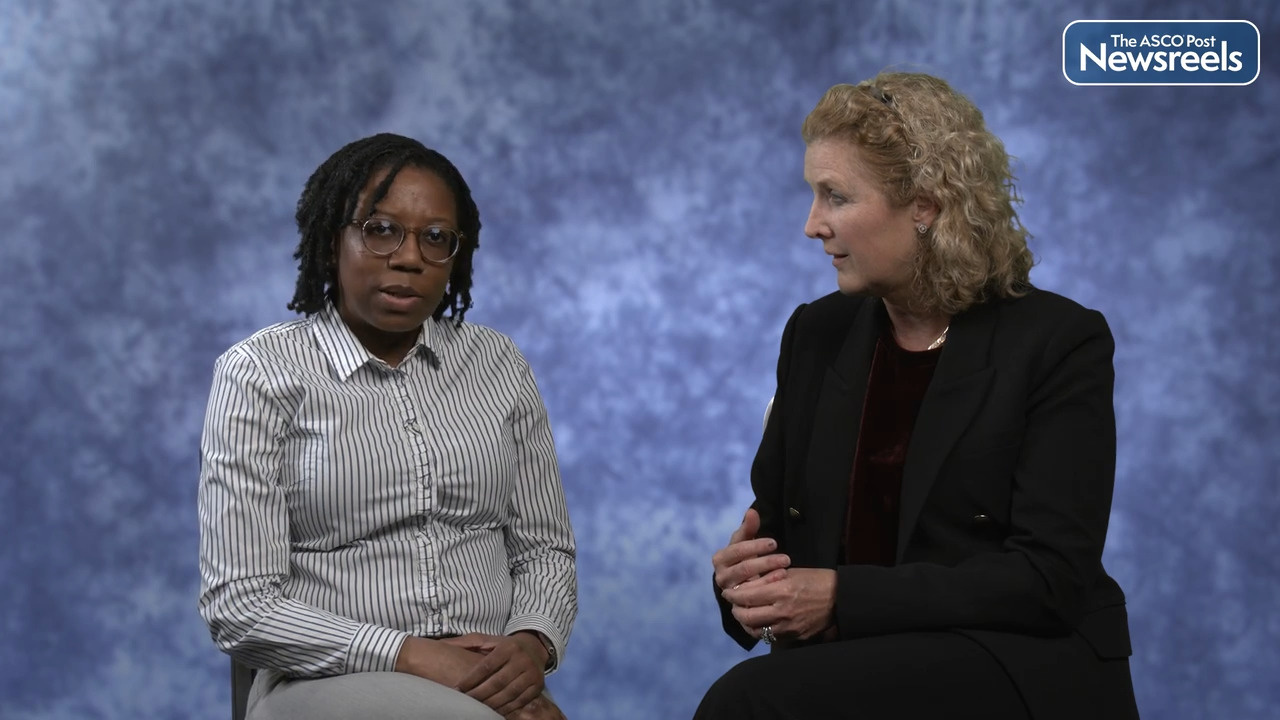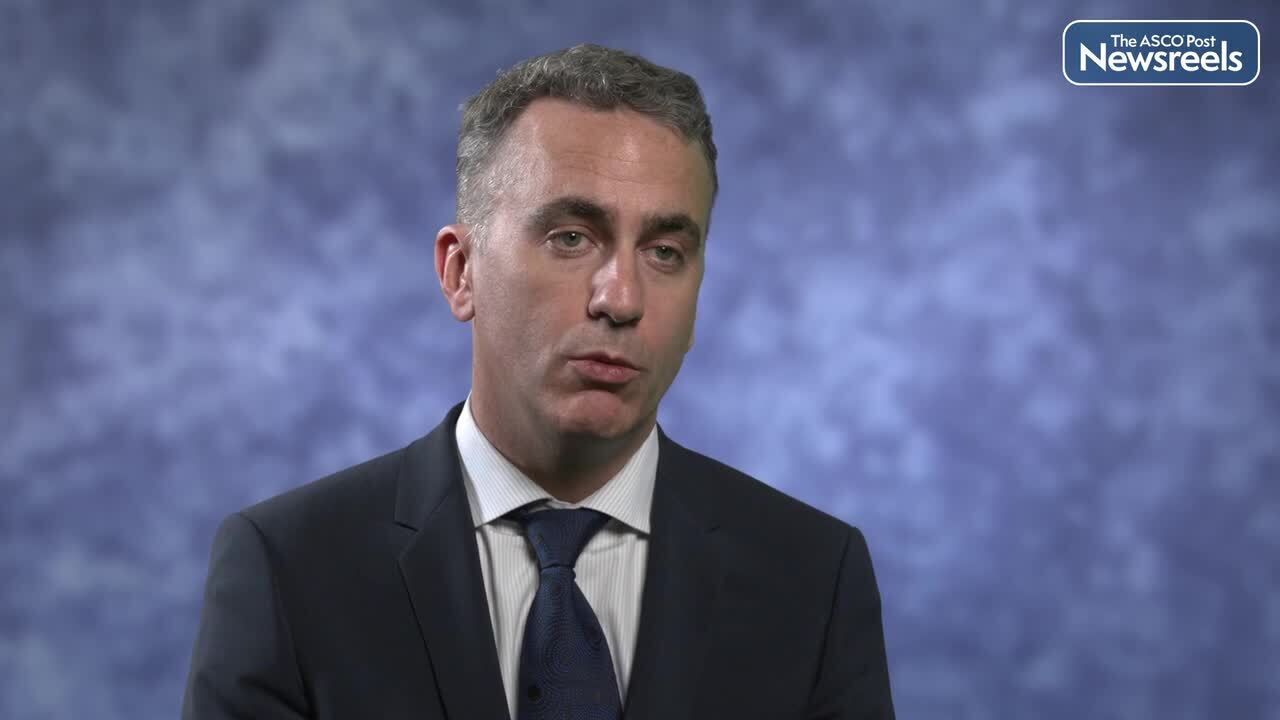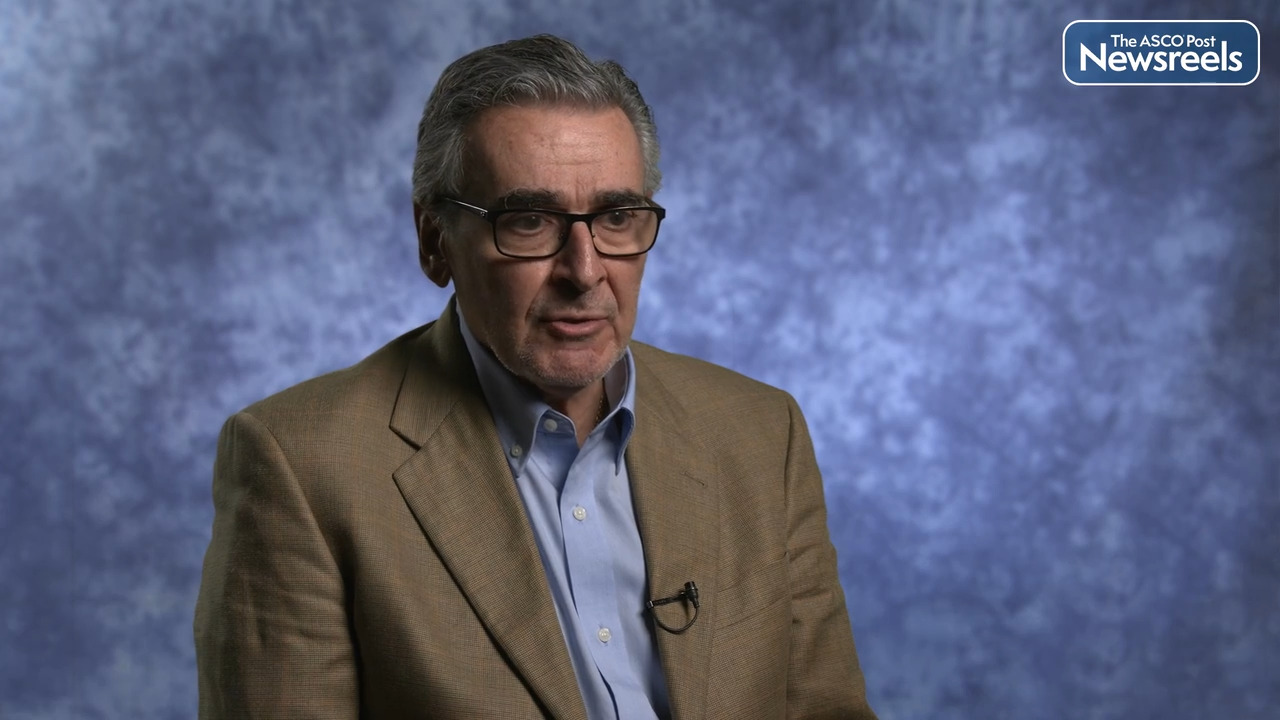Judy C. Boughey, MD, on New Findings on the Impact of Breast Conservation Therapy on Local Recurrence
2022 San Antonio Breast Cancer Symposium
Judy C. Boughey, MD, of Mayo Clinic, talks about why breast-conserving therapy may be a treatment option for some patients with multiple breast lesions. For most patients who present with two or three sites of cancer in one breast, mastectomy is recommended. But results from the ACOSOG Z11102 (Alliance) suggest that for women with multiple ipsilateral breast cancer, breast-conserving surgery with adjuvant radiation therapy and lumpectomy site boosts may be beneficial (Abstract GS4-01).
Transcript
Disclaimer: This video transcript has not been proofread or edited and may contain errors.
Historically, women who have multiple ipsilateral breast cancer have usually been recommended to undergo a mastectomy. And this has been based on historical studies that have shown high rates of local recurrence in patients treated with breast conserving surgery followed by radiation when that patient has two or three or more foci of cancer within the breast.
However, importantly more recent, his single institution retrospective studies have shown more acceptable local recurrence rates with breast conservation therapy in patients with multiple ipsilateral breast cancer. And so because of this, we designed the ACOSOG Z11102 clinical trial. We designed this as a prospective single arm phase two clinical trial, enrolling patients with two or three foci of biopsy proven breast cancer within one breast to be treated with breast conserving therapy. The protocol allowed lumpectomy to be performed via a single or multiple incisions and oncoplastic surgery was allowed. Nodal surgery was required and could be performed by either sentinel node surgery or [inaudible 00:01:11] lymph node dissection.
And then the protocol required whole breast radiation with radiation boost to each of the prior lumpectomy sites. Patients were not allowed to have neoadjuvant therapy on this trial, but all patients with ER positive disease were recommended endocrine therapy and adjuvant systemic therapy was at the discretion of the treating medical oncologist. The patients were followed up every six months for a five-year follow up. The primary endpoint of this trial was to see the five-year estimated local recurrence rate where a clinically acceptable rate determined to be less than 8%. The primary endpoint of this study revealed that the five-year local recurrence rate was 3.1% and the confidence intervals remained below that 8% clinical threshold. So overall, this is a positive study showing that the local recurrence rate is clinically acceptable after breast conserving therapy, which includes lumpectomy followed by whole breast radiation for patients with two or three foci of disease in their breast.
As we look at the study population, vast majority of patients had two foci of breast cancer with only seven patients having three foci of disease. And so as this is implemented into clinical practice, I anticipate that this will be most widely applicable to those patients that have two sites of breast cancer identified on their preoperative workup. This was also limited to patients 40 and older, and the vast majority of patients had clinically node negative disease and had ER positive HER2 negative disease.
Now, the caveat to this is that the number of patients without a preoperative MRI was low with only 15 patients without a preoperative MRI. But we did notice a statistically significant difference in local recurrence with the absence of a use of preoperative MRI. And this was an unplanned secondary analysis, but I think it's judicious to consider preoperative MRI in patients who have two foci disease that where you are considering breast conserving surgery.
Another key finding of this study was that those patients with ER positive disease that did not have adjuvant endocrine therapy had a higher local recurrence rate than those patients that did receive adjuvant endocrine therapy. And this is similar to what we see across all other treatments of breast cancer. And so this reiterates that adjuvant endocrine therapy is an important component of the treatment for patients with multiple ipsilateral breast cancer who are proceeding with breast conserving therapy.
Overall, we think that this study is very exciting and we hope that this will open up breast conserving therapy as an option for more women who are diagnosed with newly diagnosed breast cancer. In particular, those women with two sites of disease where historically many teams may have recommended mastectomy, and now these teams in these patients may consider breast conserving therapy as an option for the patient's shared decision making.
The ASCO Post Staff
Lisa A. Carey, MD, and Joannie M. Ivory, MD, MSPH, both of the University of North Carolina at Chapel Hill, discuss the higher frequency and treatment implications of nonluminal A or high-risk tumors in Black and younger women. In this study, PAM50 and 21-gene assays revealed different demographic patterns by race and age (Abstract PD1-08).
The ASCO Post Staff
François-Clément Bidard, MD, PhD, of the Institut Curie, discusses overall survival results from the STIC CTC trial. To guide the choice between chemotherapy and endocrine therapy for patients with metastatic, estrogen receptor–positive/HER2-negative breast cancer, researchers compared circulating tumor cell (CTC) count to physician’s choice of treatment. The data suggest that the CTC count resulted in better long-term outcomes (Abstract GS3-09).
The ASCO Post Staff
Joseph A. Sparano, MD, of the Tisch Cancer Center at Mount Sinai Health System, discusses long-term clinical outcomes data that continue to show many women with early breast cancer can safely forgo chemotherapy, when guided by the 21-gene recurrence score result. The longer follow-up also showed that recurrences of breast cancer continue to occur years after the original diagnosis, although these recurrences were not prevented by chemotherapy use. Racial disparities were not explained by inequities in social determinants of health or treatment adherence, with Black women at higher risk of early recurrence within the first 5 years of diagnosis, but not later recurrence after 5 years (Abstract GS1-05).
The ASCO Post Staff
Yara Abdou, MD, of the University of North Carolina, discusses results from the RxPONDER SWOG S1007 study, which showed that non-Hispanic Black women with hormone receptor–positive/HER2-negative breast cancer with one to three involved lymph nodes and a recurrence score of ≤ 25 have worse outcomes than non-Hispanic White women. In addition, Black patients were more likely to accept treatment assignment than their White counterparts and were just as likely to remain on estrogen therapy at 6 and 12 months, suggesting that outcome differences may be less likely attributable to lack of treatment compliance within the first year (Abstract GS1-01 ).
The ASCO Post Staff
Marleen Kok, MD, PhD, of the Netherlands Cancer Institute, discusses the most important advances in early breast cancer treatment during the past year for patients with triple-negative, HER2-positive, and estrogen receptor–positive disease. Dr. Kok also addresses long-term treatment toxicities and quality of life.





